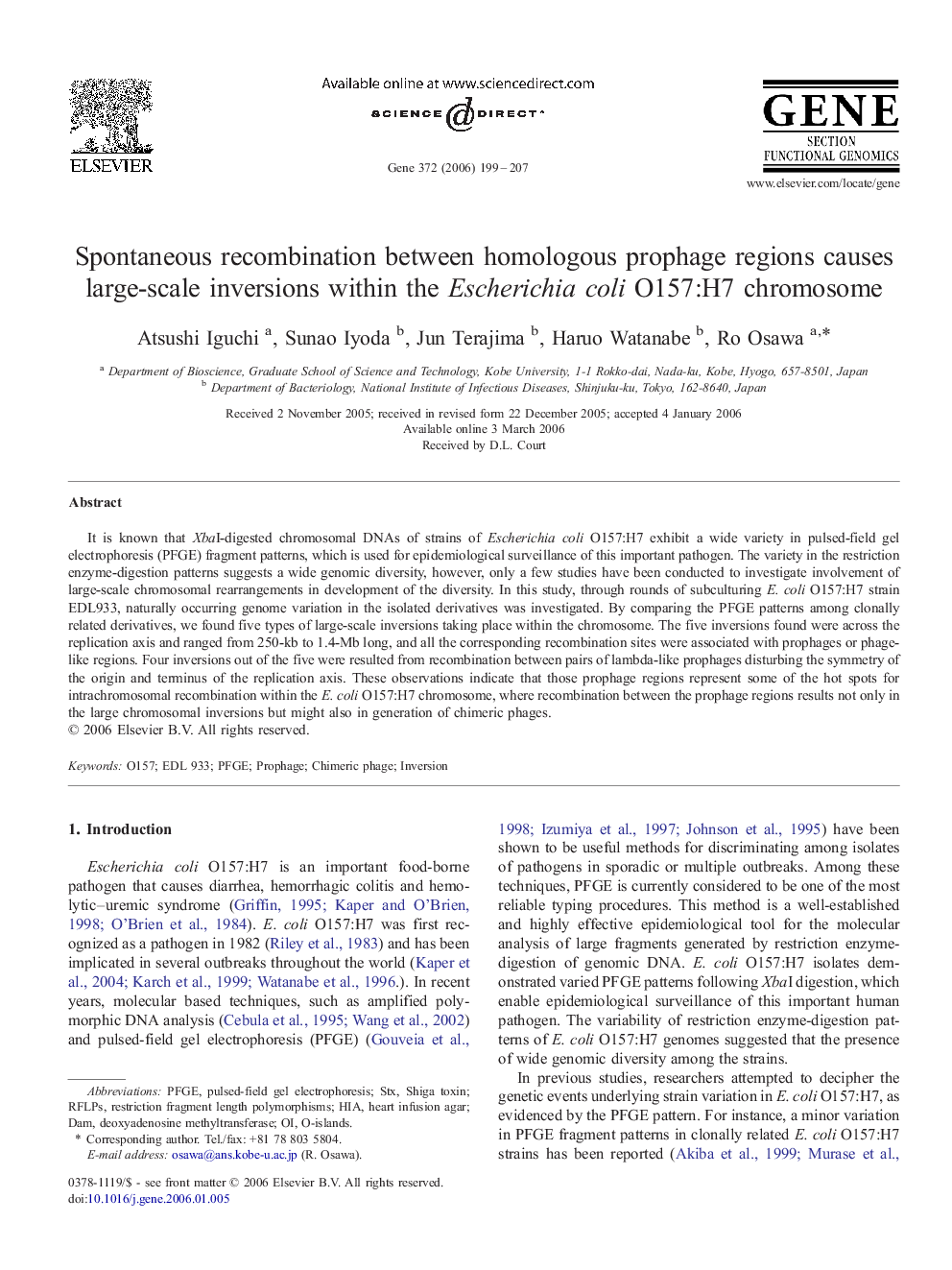| Article ID | Journal | Published Year | Pages | File Type |
|---|---|---|---|---|
| 2820189 | Gene | 2006 | 9 Pages |
It is known that XbaI-digested chromosomal DNAs of strains of Escherichia coli O157:H7 exhibit a wide variety in pulsed-field gel electrophoresis (PFGE) fragment patterns, which is used for epidemiological surveillance of this important pathogen. The variety in the restriction enzyme-digestion patterns suggests a wide genomic diversity, however, only a few studies have been conducted to investigate involvement of large-scale chromosomal rearrangements in development of the diversity. In this study, through rounds of subculturing E. coli O157:H7 strain EDL933, naturally occurring genome variation in the isolated derivatives was investigated. By comparing the PFGE patterns among clonally related derivatives, we found five types of large-scale inversions taking place within the chromosome. The five inversions found were across the replication axis and ranged from 250-kb to 1.4-Mb long, and all the corresponding recombination sites were associated with prophages or phage-like regions. Four inversions out of the five were resulted from recombination between pairs of lambda-like prophages disturbing the symmetry of the origin and terminus of the replication axis. These observations indicate that those prophage regions represent some of the hot spots for intrachromosomal recombination within the E. coli O157:H7 chromosome, where recombination between the prophage regions results not only in the large chromosomal inversions but might also in generation of chimeric phages.
